Our ninth day is difficult to sum up succinctly because we did many small, completely separate and different activities as we traveled from Rurrenabaque to La Paz to Oruro. This diary will cover the various livestock at the airport (YES, the airport!), a visit to some chullpas, and our first stop in Oruro: a surprisingly fascinating church and a market.
My trip was organized by Global Exchange and Food First. You can find out about future Food Sovereignty tours at the link.
The morning of our ninth day began VERY early. Unnecessarily early, as it turned out, once we got to the airport and realized that we had arrived before any of the airport staff. We watched the sun rise over the cows - yes, the cows - on the airfield at the tiny Rurrenabaque airport. There, check-in involves no computers, baggage check involves passing your suitcase to some guys in a room that also serves as the baggage claim (no moving carousels here), and there is no security to speak of.
We waited for the plane, giggling about the airport staff shooing the cows off the field and making jokes like "Hey look, my plane leaves from Gate 1!" (Of course, there's only one gate.) Then a member of our group returned from the window, laughing. "Now they're shooing horses off the field!" A few minutes later: "Now there are pigs!" After all of the livestock had moved out of the way, the incoming plane landed, and we left the Amazon for the Andes once again.
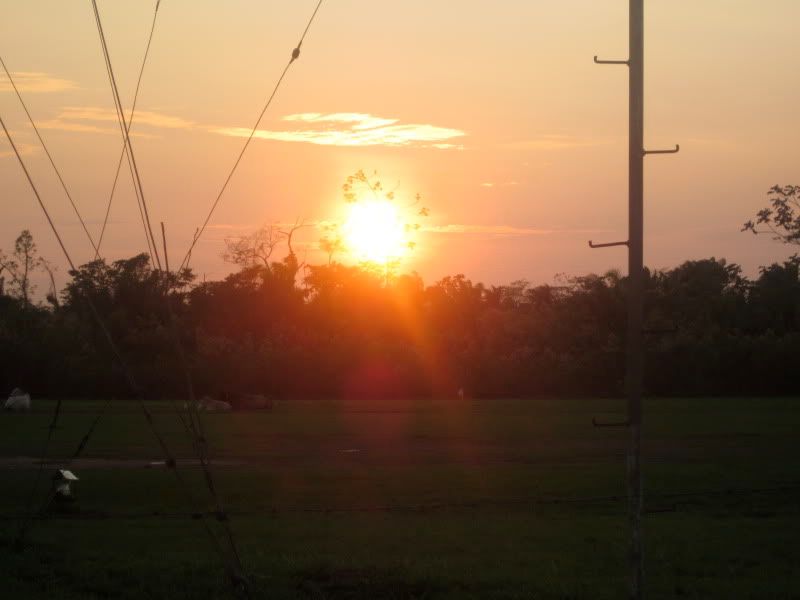
Sunrise at the Rurrenabaque airport

Cows at the airport
Once in La Paz, we had a happy reunion with Gabriel, the Bolivian biologist who had been our guide there for the first part of the trip, who was joining us again. And I had a happy reunion with the airport's ATM machine, since there was no way for me to get cash (and no one takes credit) in Rurrenabaque - or anywhere else between there and La Paz for that matter - and I was nearly out. And then we took off for Oruro.
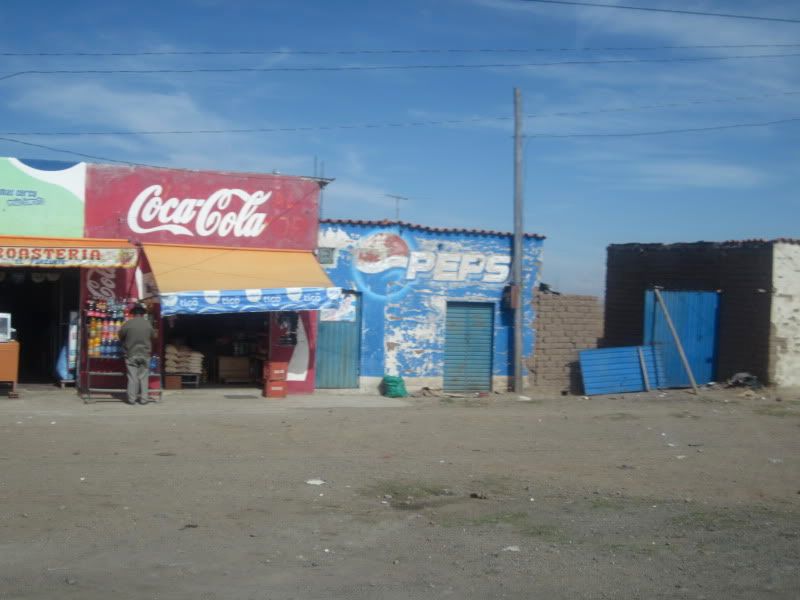
Lovely, huh? I bet if I ever learn to SCUBA dive there will be Coke and Pepsi ads on the bottom of the sea. They probably have some on the moon, too.
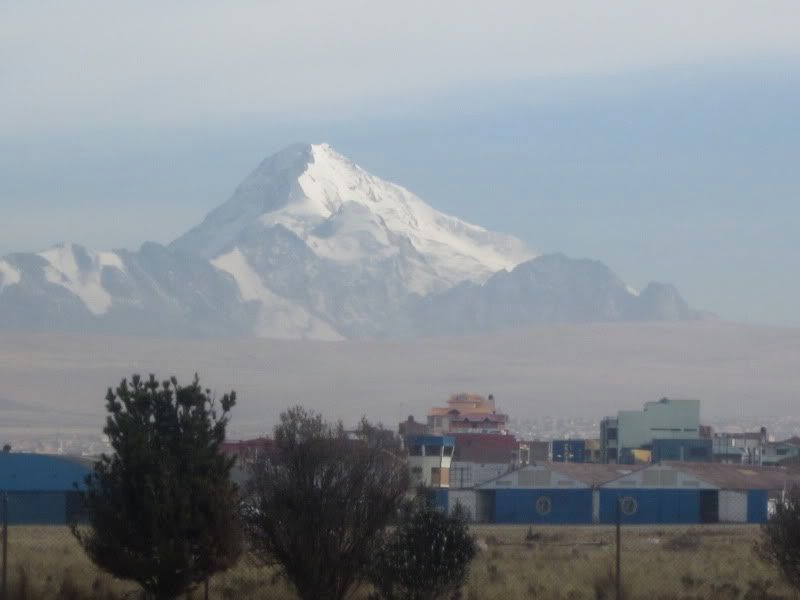
Andes are pretty, don't you think?
Our destination was Sajama National Park, named after the mountain Sajama (which is also the name of the province the park and the mountain are located in), near the Chilean border.
Our first stop for the day were some random chullpas. These are funerary towers that are found all over Bolivia. The corpses found inside are often in the fetal position. There is some folklore that says the chullpa people lived before the sun came to bring light to the earth and when the sun rose for the first time, the chullpa people died of fear.
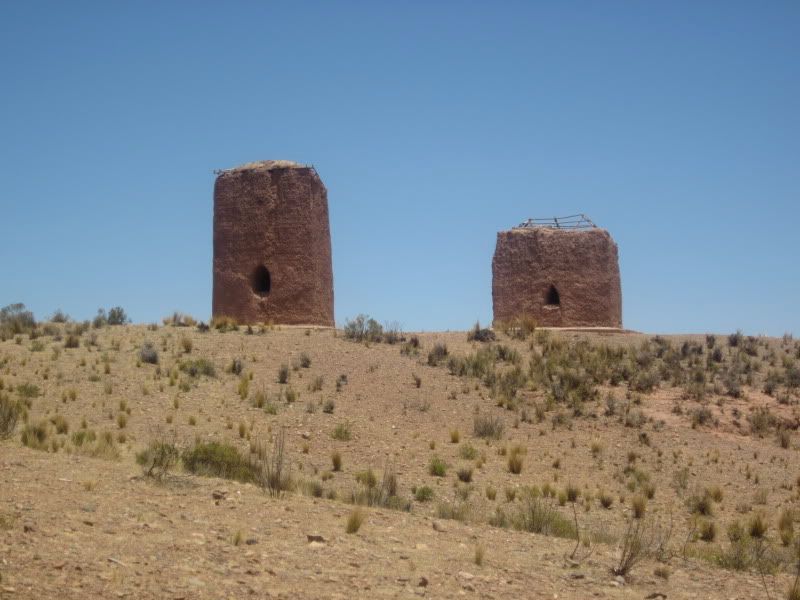
Chullpas
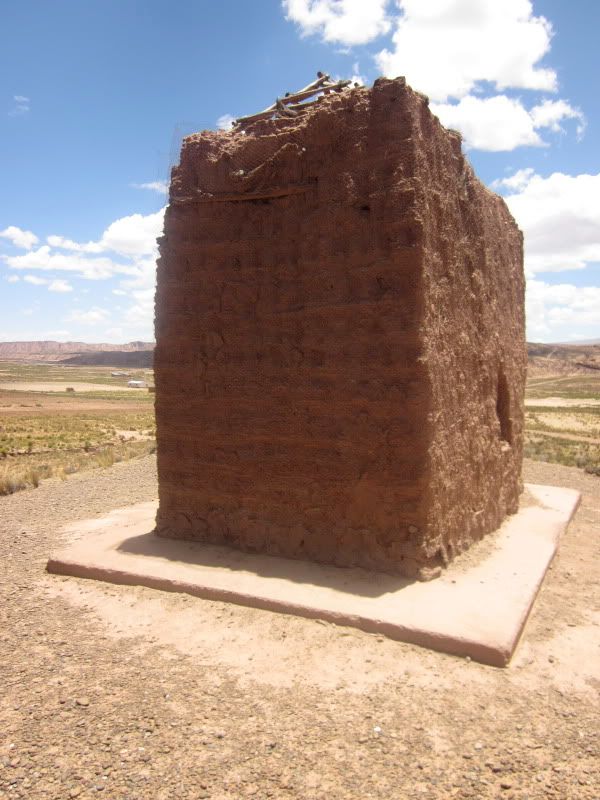
A chullpa

The entrance to the chullpa
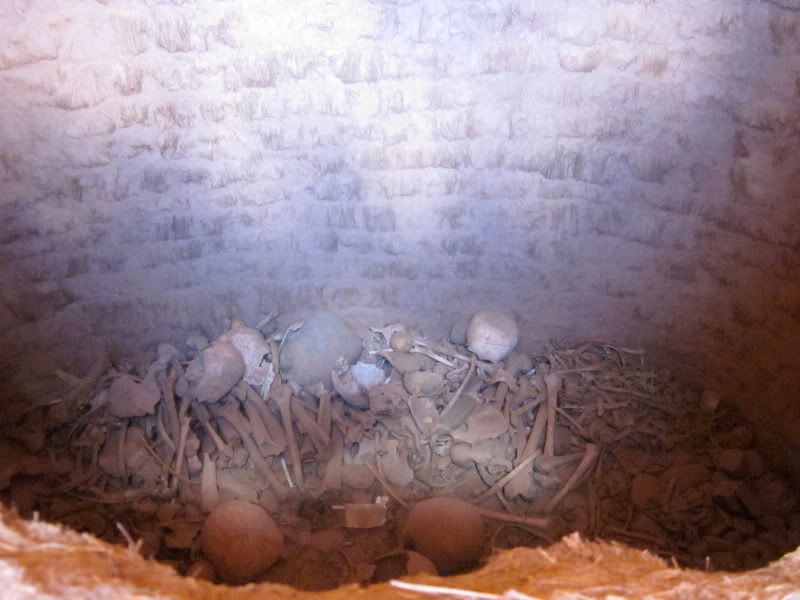
Inside the chullpa (you can see bones in there)

A home and a family that lives next to the chullpas
By the way, if you've gotta go, I recommend going behind the chullpas. There are NO bathrooms and few cities around on these long drives, and there aren't even trees to pee behind.
Our next stop was the city of Curahuara de Carangas, home of a church worth seeing and a market we stopped at. Here are some pictures of the outside of the church, which I believe was constructed in the 16th Century, but the outside isn't the real story. I'll tell you about the inside (where taking pictures was forbidden) below.
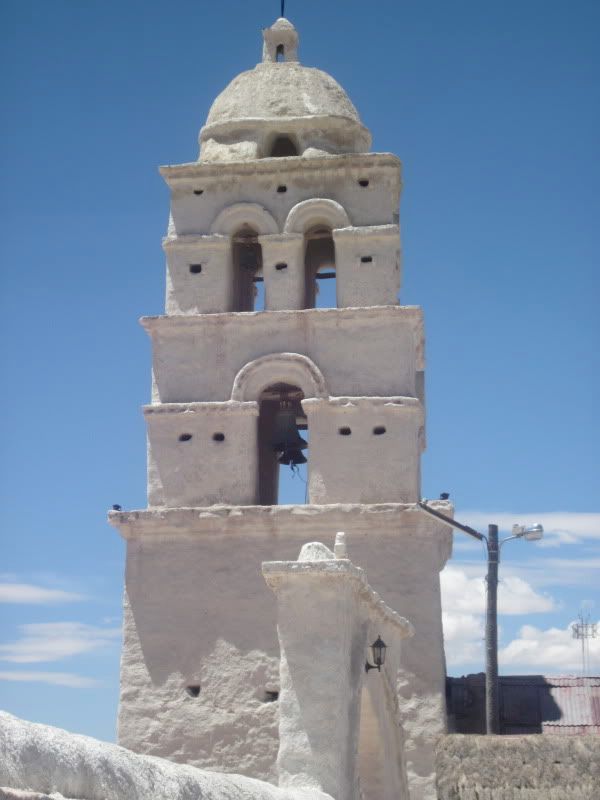
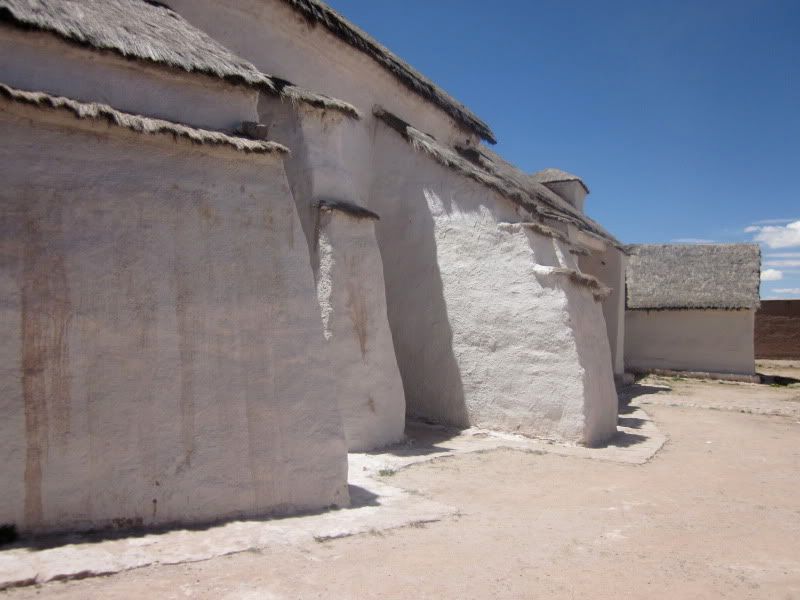
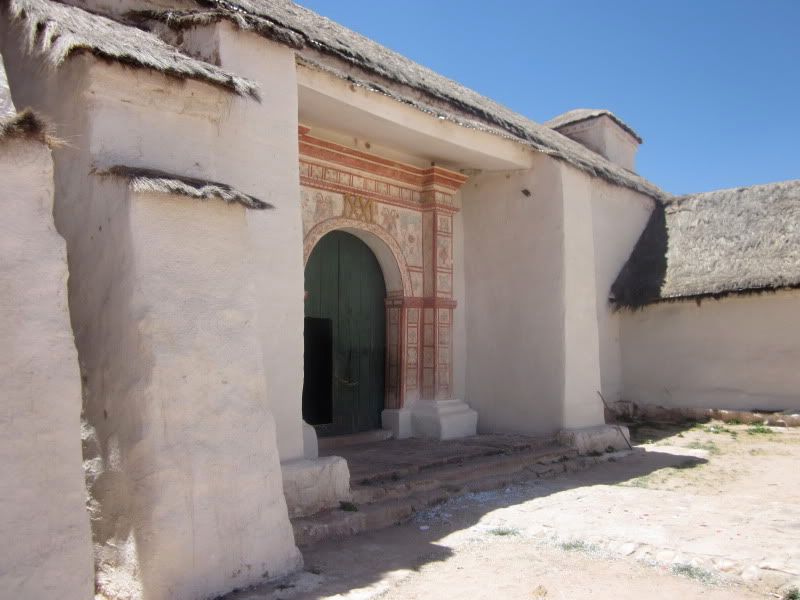
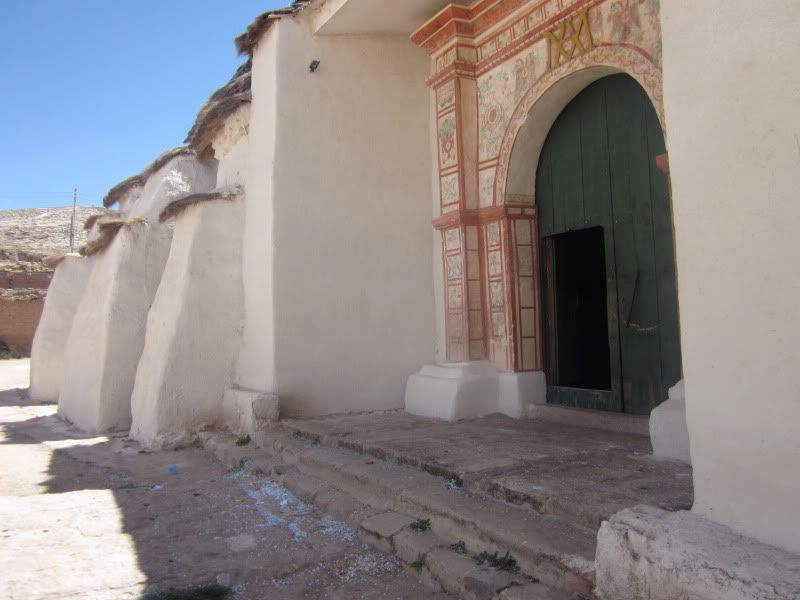
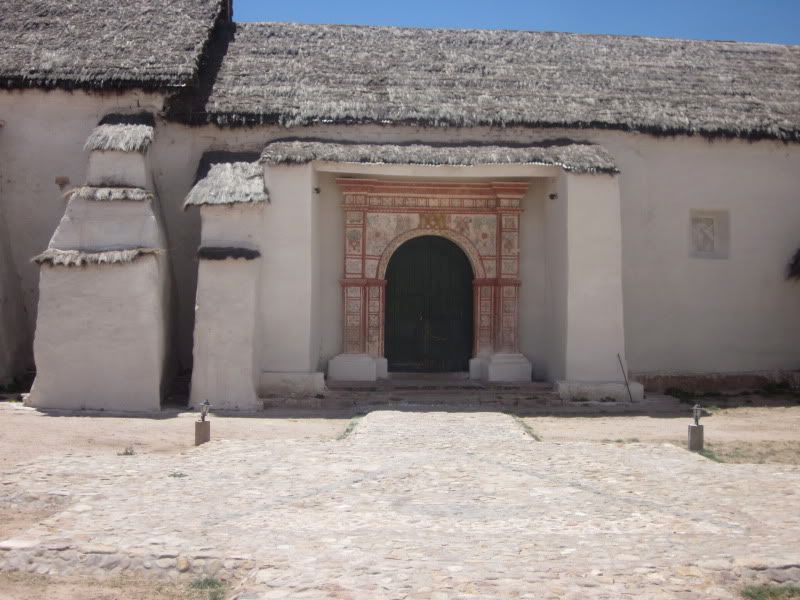
Look... the path to the church is in the shape of an Andean cross
The inside of the church was painted wall-to-wall with every Biblical scene you can imagine. They had the birth of Jesus, the Last Supper, the Last Judgement, Noah's Ark, you name it. But these were no ordinary paintings. Oh no. Because the three wisemen came to Bethlehem with llamas. And, at the last supper, Jesus dined on guinea pig and potatoes. The Spanish were in charge when this church was painted (in the 18th century, I believe), but they trained indigenous artists in European painting techniques and it was the indigenous people who actually did the painting.
Better yet, was the Last Judgment scene. It showed Jesus in heaven, with the Sun and the Moon to his left and his right, but at the same height as Jesus himself. This implied that both the sun and the moon are gods equal to Jesus. (The Inca worshiped the Sun and "his sister-bride," the Moon. Incan rulers claimed to descend from the sun and would also marry their sisters. The reason is that the Incan rulers were supposed to be so holy that they did not want to "water down" their holy blood by marrying and having offspring with non-related people or even distant relatives. Only their sisters were holy enough to bear the next heir to the throne.)
What was disturbing were scenes and even a terrifying statue of "San Tiago, Mata Moros" - Saint Tiago, the Moor Killer. Of course, San Tiago was also the Indigenous Bolivian Killer, but that might not have won over so many Incan or Aymara converts so I guess it was left off his resume in the Andes. You might assume that the indigenous people would hate San Tiago - as they heard the Spanish yelling to him as they killed scores of Bolivians in battles - but it was quite the opposite. They figured that this San Tiago guy must be pretty darn powerful and they had really screwed up by not worshiping him. Clearly, that was why they were getting their butts kicked by the Spanish. So the indigenous Bolivians got right on board with San Tiago, in an effort to win his favor and perhaps stop losing to the Spanish all the time.
It was about halfway through the church that altitude sickness hit me. Hard. I walked outside, drank some water, ate what food I had on me, got myself some coca tea, and sat down. While I was out there, I noticed something else. The path leading to the church was a cross... but it was an Andean Cross. And the Andean Cross has NOTHING to do with Jesus. Hehe.
As we were leaving, several of us decided to get a picture of some nearby alpacas (I think?) and our guides promised us for the zillionth time that we would be seeing "literally thousands" of llamas and alpacas. Oruro is much drier than the area near Lake Titicaca we had visited before. The vegetation is considered "dry puna" instead of "wet puna." As you drive from wet puna to dry puna, the change is obvious. Suddenly, you stop seeing cows and sheep and you start seeing llamas and alpacas. The grasses look different too. (And, somehow, all Bolivians seem to have some innate ability to immediately tell the difference between llamas and alpacas, a skill that I do not yet possess.)
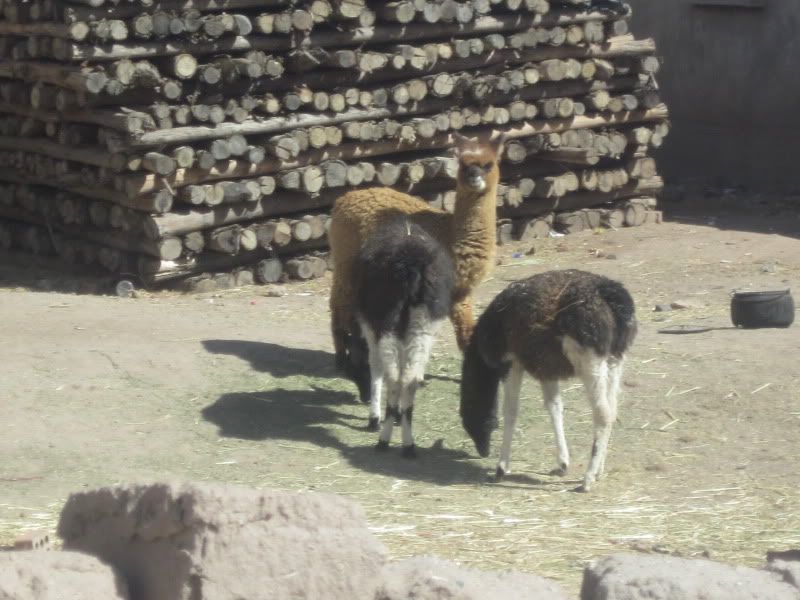
Alpacas, I think
Next, we went to a market. It was a market intended for Bolivians, not for foreigners. Most of the items being sold were not terribly appealing to me as a shopper, but they were interesting to me as someone learning about Bolivia's food and agriculture. Many of the first pictures show clothing. I found it fascinating that the traditional cholita clothes are sold alongside with "modern" clothing.
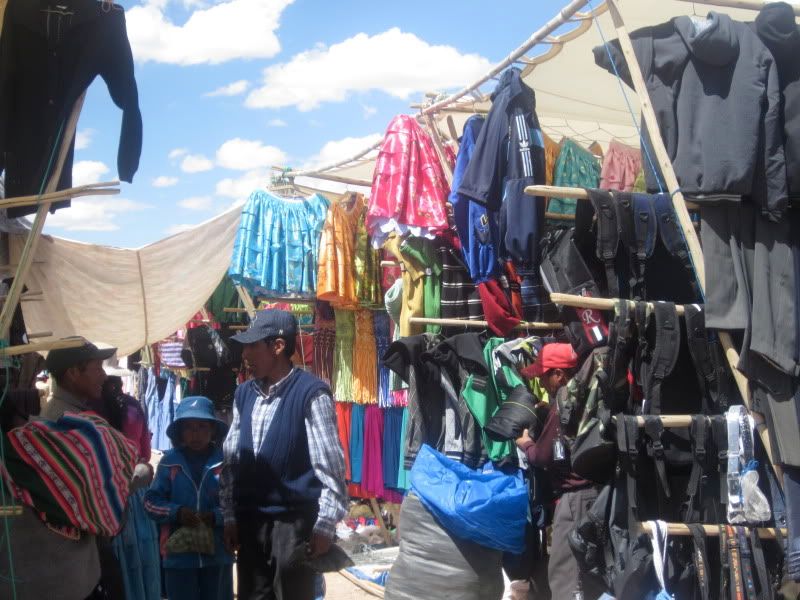
Cholita gear
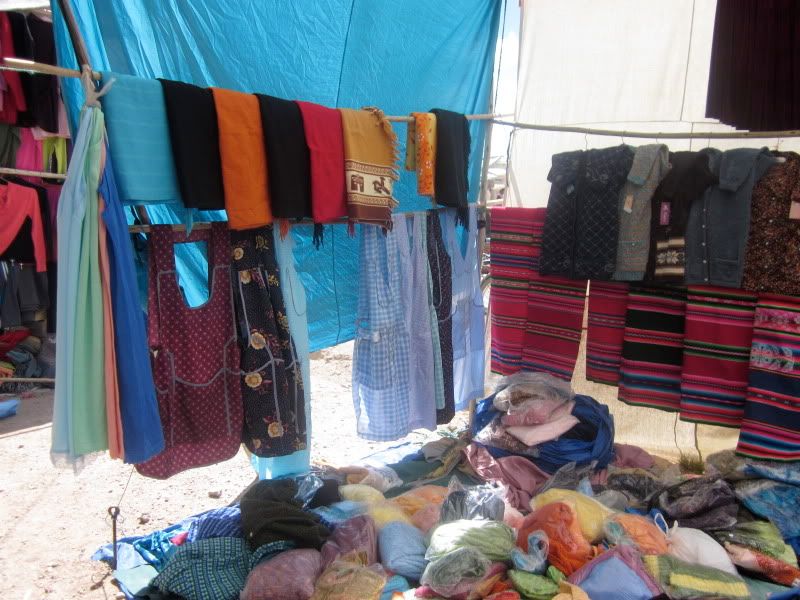
Cholita gear
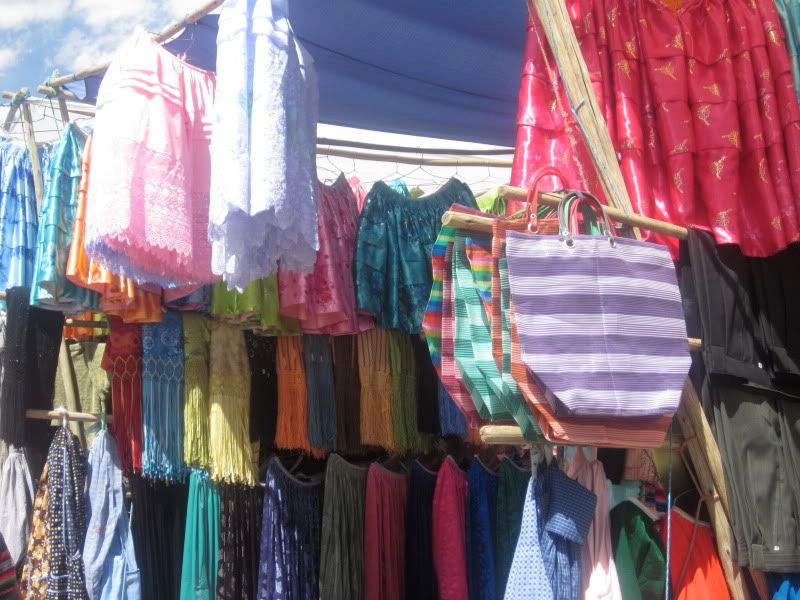
Cholita gear
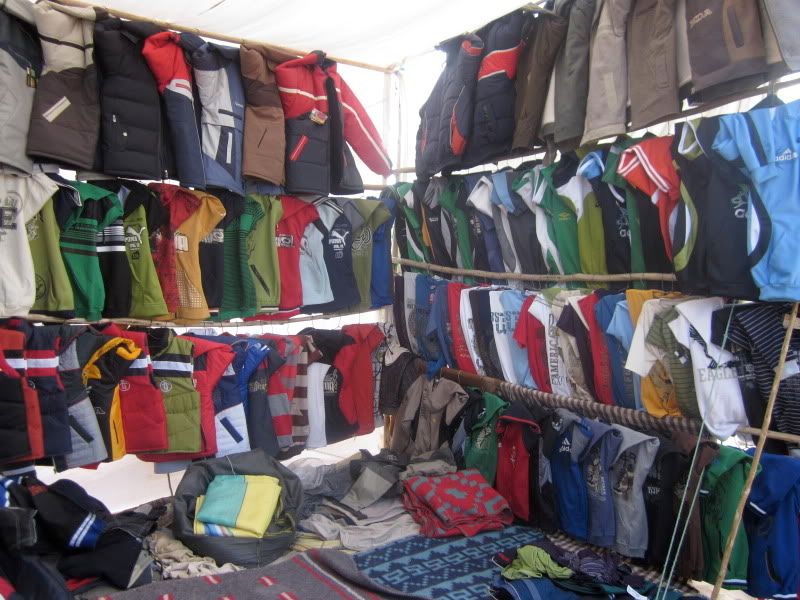
Clothing (non-cholita)
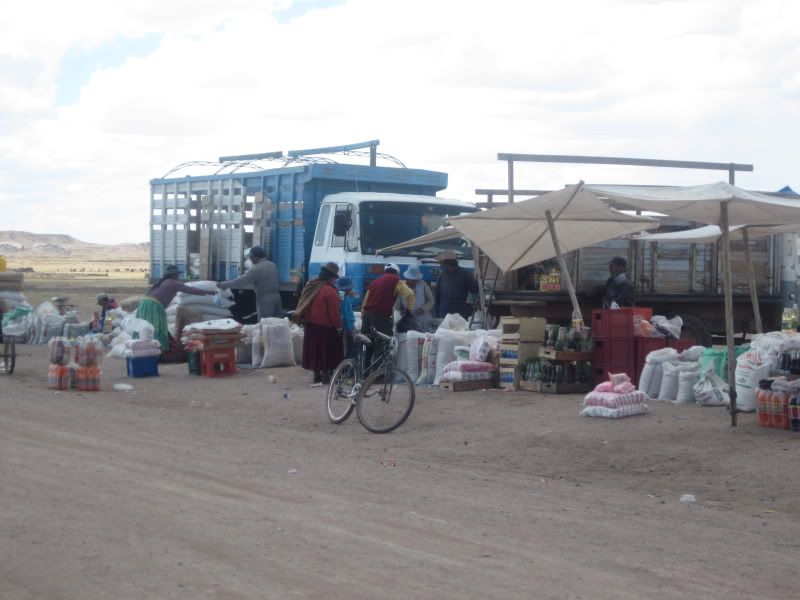
Bulk bags of rice and flour

Athletic shoes and soccer balls
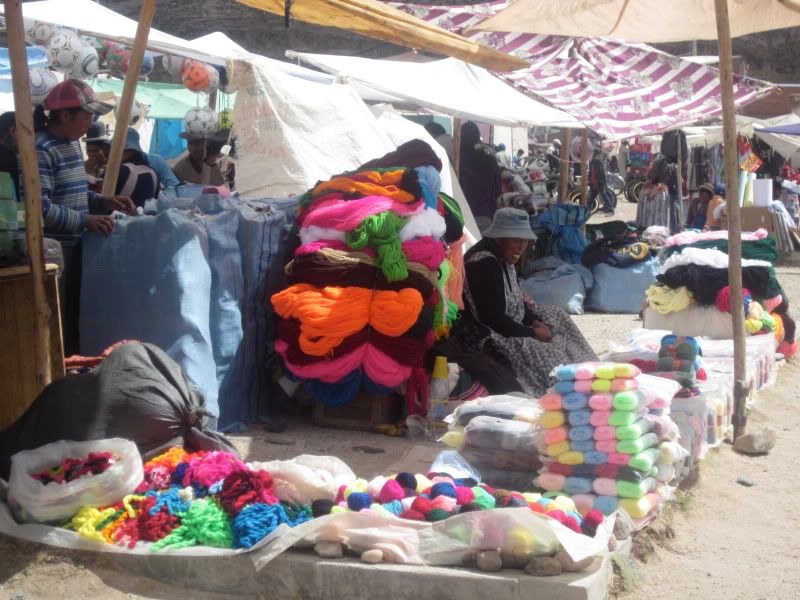
Yarn (much of it was acrylic)
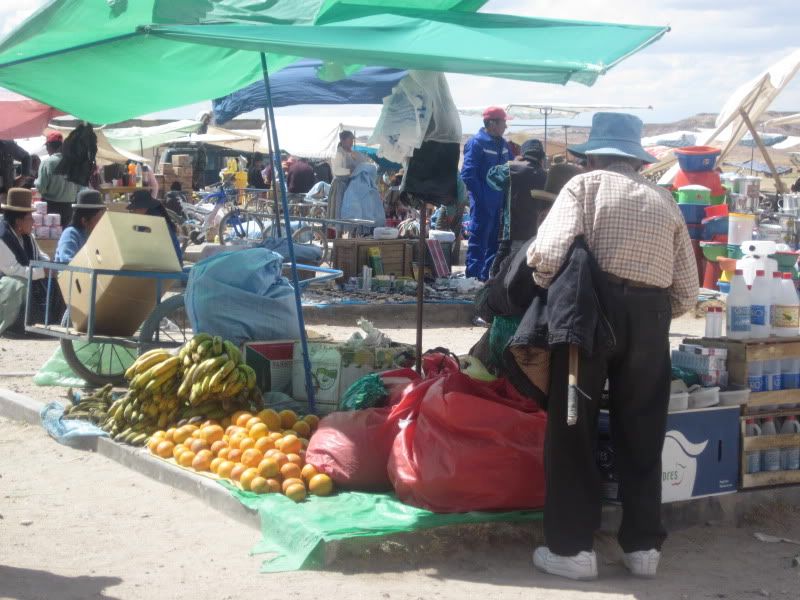
Oranges and bananas
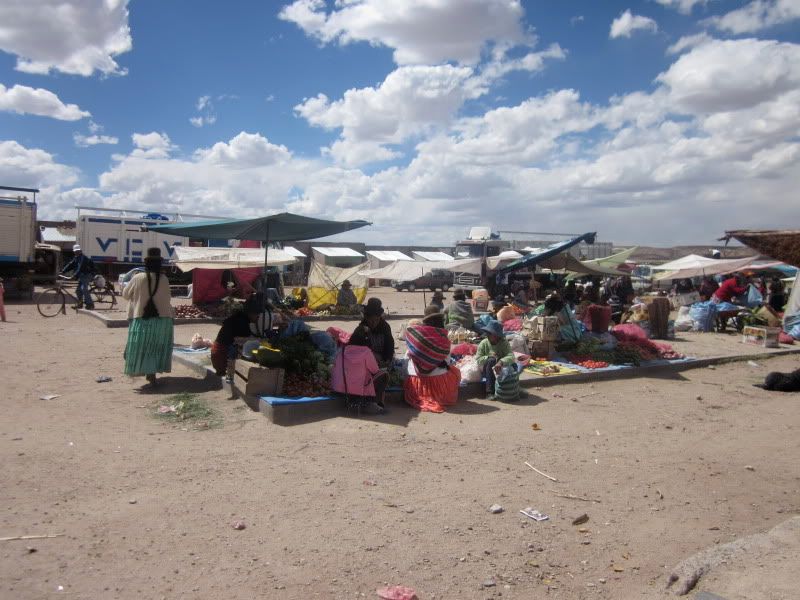
Fruits and veggies

Apples and oranges
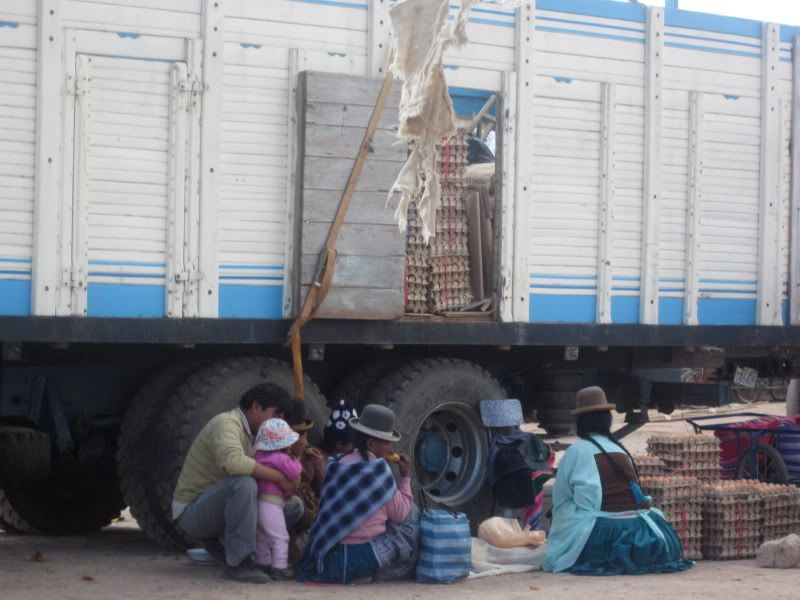
Lots and lots of eggs
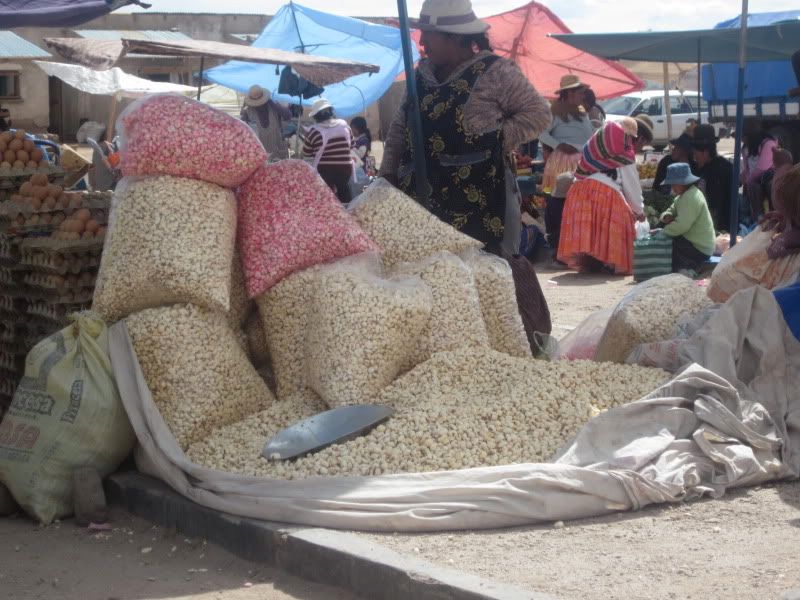
"Pasankalla," Bolivian sweetened popcorn

Seeds, animal drugs, and agrochemicals
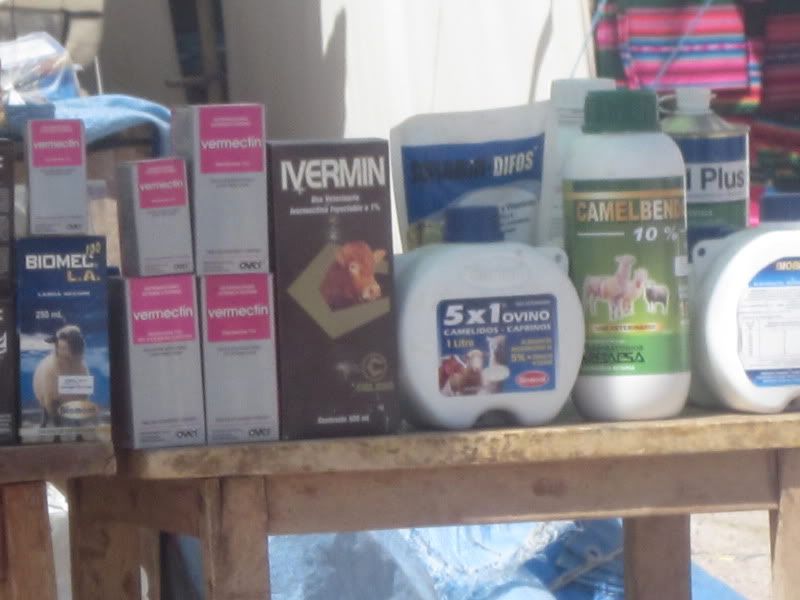
A close up of the animal drugs and agrochemicals
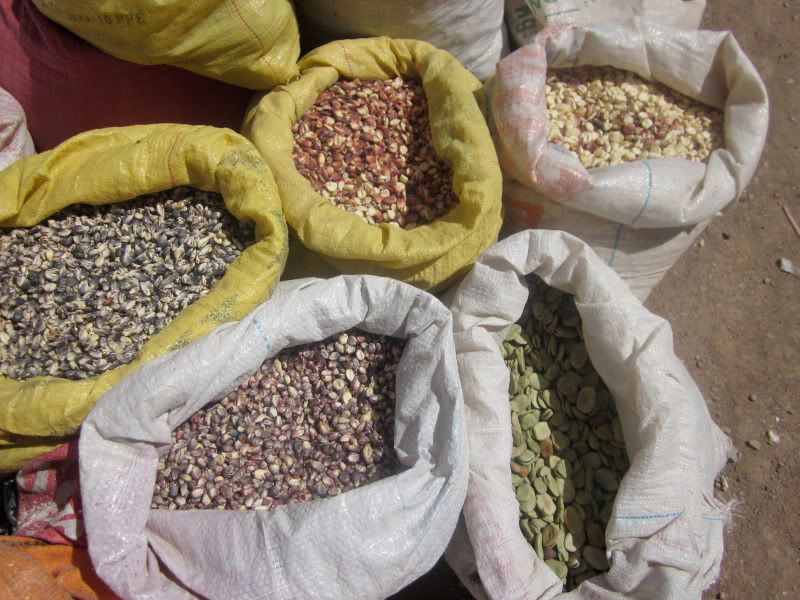
Several varieties of corn and some fava beans
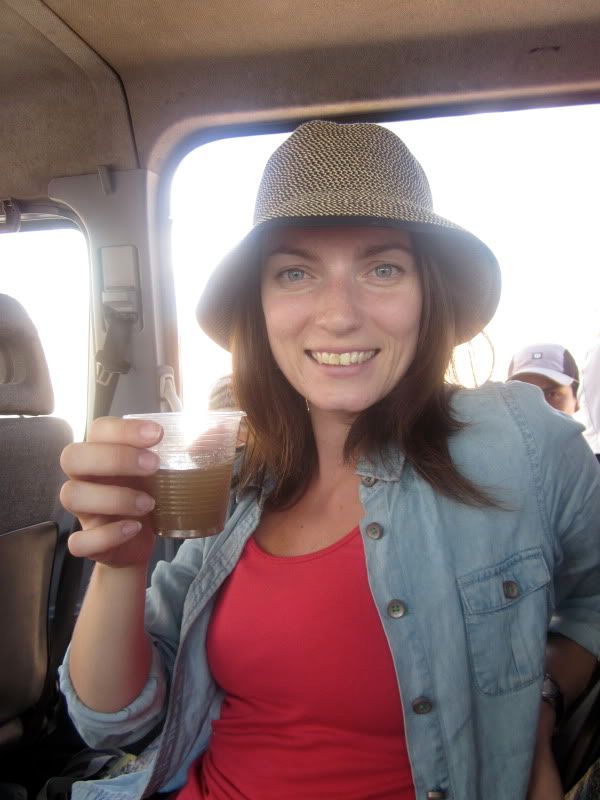
Tanya, our guide, drinking some canawa

Pacay
The picture of the corn was very difficult for me to get. I asked the cholita woman who was selling it if I could take a picture. She did not respond. Then I asked if I could purchase a little of each type of corn so that - once I owned it - I could take a picture. She did not respond. I left.
Then I thought about it. Maybe she only spoke Aymara and did not speak Spanish. It certainly would not be the first time. I went back and showed her my camera and pointed to the corn. She gestured no again. I showed her money. She still refused. At that point our bus driver came to intervene. He was a bit of a weird guy and he'd come in strangely handy before (when I was getting the picture of the DDT in Achacachi).
This time, I explained to him that I wanted a picture and I was willing to buy the corn in order to get it. I went out of my way to compliment what beautiful corn it was, and how wonderful it was to have so many varieties, whereas in the U.S. we do not have such great variety. He somehow got the woman to agree to let me pay her in order to take a picture. I gave 3 Bolivianos to the bus driver, assuming he would give her the proper amount. She moved far away from the corn to be sure she wasn't in the picture, and I got my picture. Then the bus driver handed her 1 B and gave me the rest back.
Once we got back to the bus, everyone came together for a snack. Gabriel had purchased locally made cheese, bread, pacay, and a cooked, dried, and powdered form of canawa (a local grain) that is made into a beverage by mixing it with water (usually sweetened with sugar). Gabriel got me to try the pacay but failed to mention it was called "ice cream bean" in English, a detail that would have made me much more enthusiastic about it. It tasted OK. We had a little feast in our minibus, then piled back in, and kept driving toward Sajama.
No comments:
Post a Comment